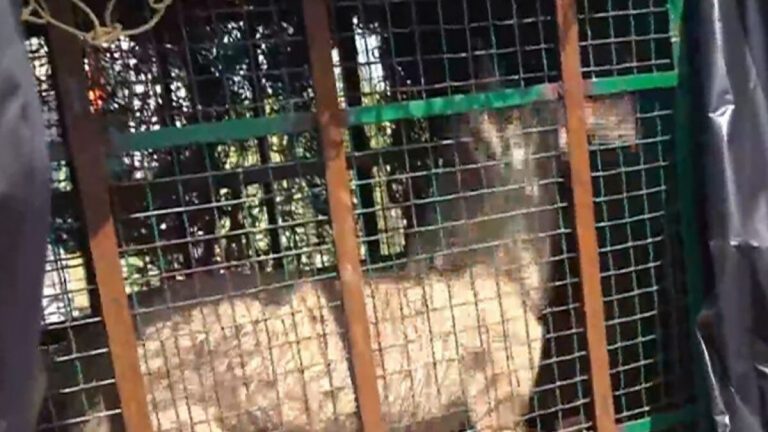Last updated:

The Uttar Pradesh government launched Operation Bhediya to capture wolves in the region. (Press Trust photo)
The Uttar Pradesh government has warned that lethal measures may be taken if the wolves are not apprehended soon.
A series of wolf attacks in Balaich, Uttar Pradesh, killed nine people, including eight children, and injured at least 25 others. The situation caused widespread panic in 50 villages in the area. Despite the efforts of the forest department, which resulted in the capture of four wolves, two particularly aggressive animals are still at large. Authorities are conducting an ongoing search using drones and night vision cameras, and the Uttar Pradesh government has warned that lethal measures could be taken if the wolves are not apprehended soon.
Understand the real threats
Wolves are often portrayed as ferocious predators capable of attacking humans. However, wildlife experts and biologists offer a different view. Siddharth Singh, a wildlife expert who specializes in wolves, said the animals are often elusive and avoid contact with humans. Wolves are known for their shy nature, tending to hide and appearing mainly at night. Singer stressed that wolves are not inherently aggressive and usually only pose a threat when circumstances force them to act.
Why do wolves turn to attack humans?
Siddharth Singh explained that wolves may attack humans when they are injured or struggling due to conflicts with humans or other factors. In this case, they may seek out easier prey, and unfortunately, young children may become targets. Once a wolf pack starts preying on humans, other wolves may follow suit. In the Balechi incident, one of the wolves was reportedly lame, suggesting it may have initially targeted humans out of desperation.
Why are young children the only ones being targeted?
Wolves usually prey on animals smaller than themselves, such as young goats or lambs, which they can easily overpower and carry. Young children, especially those around 2-3 years old, are also easy targets due to their limited ability to defend themselves. This vulnerability makes them more vulnerable to wolf attacks.
Why do wolves always travel in packs?
Wolves are known for their social structure, and their tendency to travel in packs is the result of their close bond with each other. Scientists explain that these connections are deep and integral to their survival. A wolf pack is led by the eldest or dominant member, who is responsible for guiding and protecting the pack. Wolves have a natural aversion to being separated from the pack. Typically, a wolf pack consists of 7 to 12 wolves, but some may have as many as 20 to 30 wolves.
Why is it so difficult to capture wolves?
Siddharth Singh pointed out that wolves are very intelligent animals with excellent communication skills. They are highly alert to even the faintest noise and, due to their relatively small size, are adept at hiding in their surroundings. This makes them difficult to detect. In addition, each wolf pack consists of a alpha wolf, capturing it is crucial to controlling the entire group. As far as Balechi is concerned, alpha The wolf may still be on the loose, which could explain why the attacks continue.
Some interesting facts about wolves
- Three species of wolves and approximately 40 subspecies are found around the world.
- Adult male wolves can reach 6.5 feet in length, while females are usually 4.5 to 6 feet long.
- Wolves can reach speeds of 58 to 61 kilometers per hour.
- A wolf pack can consist of 7 to 30 members.
- Wolves have 42 sharp teeth, allowing them to kill their prey almost instantly.
- The average lifespan of a wolf is 6 to 7 years.
- In India, wolves are listed as endangered and face significant threats to their existence.
